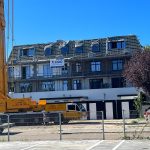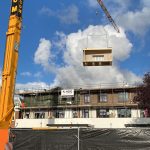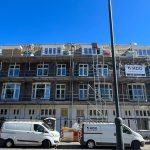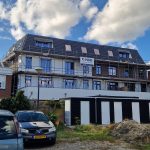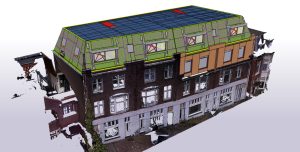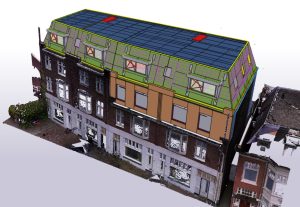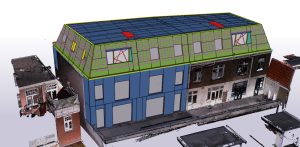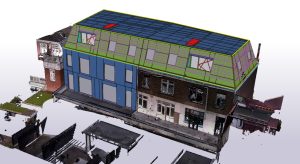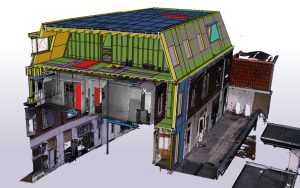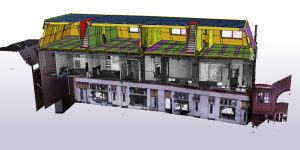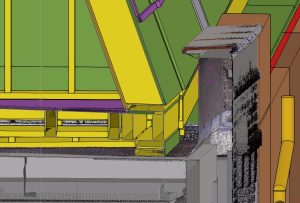Appartementen Julianalaan, Haarlem

| Kategorie | Kommerzielle Projekte |
|---|---|
| Jahr | 2024 |
| Land | Benelux |
| Organisation | HDO Groep BV |
| Projektpartner | - |
| Verfasser | N. Hoogeboom |
| Mitverfasser | B. Klootwijk J. Driesen S. Van Waardenburg |
| Auftraggeber | Private ontwikkelaar |
| Ort des Bauwerkes | Haarlem |
| Tags | PrefabTekla StructuresTrimble ConnectTimber |
Het project
Penthouses Julianalaan, een voormalige garage met bovenwoning getransformeerd in 10 luxe appartementen. De uitdaging? Stalen constructies vervangen door hout, prefabricage toepassen en de complexiteit van de bestaande structuur omarmen.
De visie
Een slank en efficiënt ontwerp, gericht op duurzaamheid en maakbaarheid. Hout als primaire bouwmateriaal, niet alleen esthetisch fraai, maar ook ecologisch verantwoord.
De uitdagingen
• Stalen constructies elimineren: 75% van het staal werd vervangen door hout, waardoor een lichtere en meer flexibele structuur ontstond.
• Prefabricage optimaliseren: De modules werden in de fabriek geproduceerd, wat de bouwtijd verkortte en de kwaliteit verhoogde.
• Complexe geometrie: De bestaande structuur was verre van rechthoekig, wat een creatieve benadering vereiste.
De oplossing: BIM (Building Information Modeling)
• Nauwkeurige scans: De bestaande structuur werd met een laserscanner ingemeten, waardoor een digitaal 3D-model ontstond.
• Virtuele planning: Het ontwerp werd in BIM gemodelleerd, waardoor clashes en fouten in een vroeg stadium konden worden gedetecteerd.
• Efficiënte coördinatie: Alle disciplines, van architect tot constructeur, werkten samen in hetzelfde BIM-model.
Het resultaat
• Duurzame transformatie: Een modern gebouw met een minimale ecologische voetafdruk.
• Snel en efficiënt: De bouwtijd werd met 20% verkort dankzij prefabricage.
• Hoge kwaliteit: De nauwkeurigheid van BIM resulteerde in een perfect afgewerkt gebouw.
The project
Julianalaan Penthouses, a former garage with an apartment above, transformed into 10 luxury apartments. The challenge? Replacing steel structures with wood, applying prefabrication, and embracing the complexity of the existing structure.
The vision
A sleek and efficient design focused on sustainability and manufacturability. Wood as the primary building material, not only aesthetically pleasing but also ecologically responsible.
The challenges
• Eliminating steel structures: 75% of the steel was replaced with wood, resulting in a lighter and more flexible structure.
• Optimizing prefabrication: The modules were produced in the factory, which reduced construction time and increased quality.
• Complex geometry: The existing structure was far from rectangular, which required a creative approach.
The Solution: BIM (Building Information Modeling)
• Precise scans: The existing structure was measured with a laser scanner, creating a digital 3D model.
• Virtual planning: The design was modeled in BIM, allowing clashes and errors to be detected at an early stage.
• Efficient coordination: All disciplines, from architect to engineer, worked together in the same BIM model.
The result
• Sustainable transformation: A modern building with a minimal ecological footprint.
• Fast and efficient: Construction time was reduced by 20% thanks to prefabrication.
• High quality: The accuracy of BIM resulted in a perfectly finished building.

